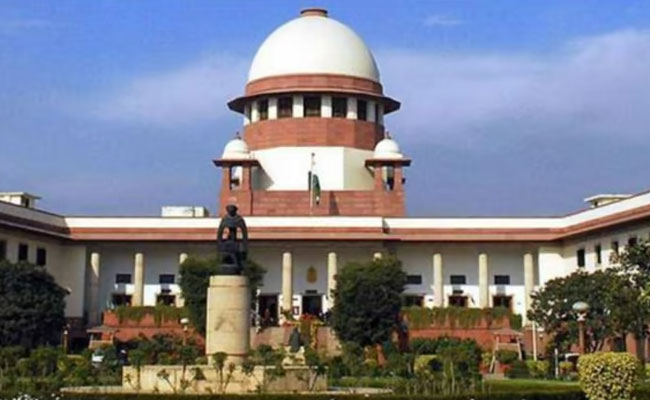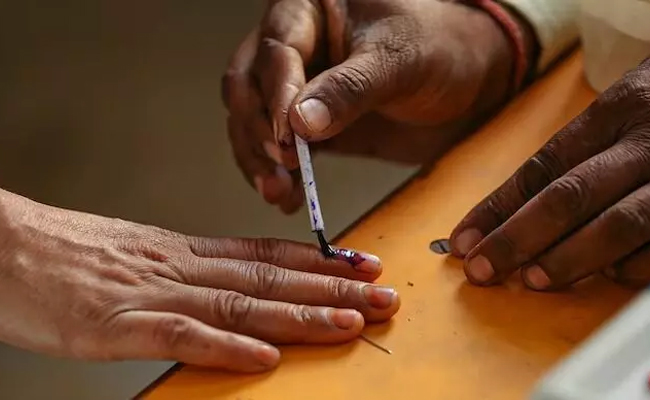New Delhi: The Supreme Court recently upheld the use of Urdu on a municipal signboard in Maharashtra’s Akola district, rejecting a plea challenging its use. The court emphasised that language is an integral part of culture and should not be used as a divisive tool. Urdu, the court stated, represents the "finest specimen of Ganga-Jamuni tehzeeb, or the Hindustani tehzeeb".
The bench, comprising Justices Sudhanshu Dhulia and K. Vinod Chandran, disagreed with the petitioner's view, asserting that Urdu is not “alien to India.” The court pointed out that Urdu was born and evolved in India, primarily to serve as a common means of communication among people from diverse cultural backgrounds. "Urdu developed and flourished in India due to the need of people belonging to different cultural milieus who wanted to exchange ideas and communicate amongst themselves,” the bench remarked.
The court dismissed a petition by former councillor Varshatai Sanjay Bagade, who had challenged the use of Urdu on a signboard of the new building of the Patur Municipal Council. “The purpose here for the use of Urdu is merely communication. All the municipal council wanted to do was to make an effective communication. This is the primary purpose of a language, which the Bombay High Court has laid emphasis on,” the court noted.
The court further underscored the deep-rooted presence of Urdu in Indian legal parlance, noting its significant influence on both criminal and civil law. Terms like adalat, halafnama, and peshi are commonly used in Indian courts. "Even though the official language of the Supreme Court and the High Courts, as per Article 348 of the Constitution, is English, many Urdu words continue to be used in this Court to date," the bench pointed out.
The court also highlighted that many Indian states and Union Territories have adopted Urdu as a second official language. It warned against criticising Urdu, noting that such criticism often reflects a broader misunderstanding of linguistic unity. "When we criticise Urdu, we are in a way also criticising Hindi, as linguists and literary scholars assert that Urdu and Hindi are not two languages, but one language," the bench stated.
“Hindi and Urdu met a roadblock in the form of the puritans on both sides and Hindi became more Sanskritised and Urdu more Persian. A schism exploited by the colonial powers in dividing the two languages on religion. Hindi was now understood to be the language of Hindus and Urdu of the Muslims, which is such a pitiable digression from reality; from unity in diversity; and the concept of universal brotherhood,” it said.
The court concluded by reaffirming that language should be seen as a bridge for communication, bringing people from varied backgrounds closer together. It emphasised that language should never be used as a tool for division but rather as a medium to foster diverse views and unity.
Let the Truth be known. If you read VB and like VB, please be a VB Supporter and Help us deliver the Truth to one and all.
New Delhi (PTI): The Supreme Court on Wednesday transferred the RG Kar Medical College trainee doctor rape and murder case to the Calcutta High Court.
The top court had taken suo motu cognisance of the case in 2024.
A bench of justices MM Sundresh and Satish Chandra Sharma directed that the case papers be sent to the high court.
ALSO READ: Delhi govt to pay Rs 10,000 to workers hit by anti-pollution restrictions
The top court also directed that a copy of the status report be given to the parents of the victim.
The body of the postgraduate trainee doctor was found in the hospital's seminar room on August 9 last year. The Kolkata Police arrested Sanjay Roy, a civic volunteer, the next day.
On January 20, a Kolkata trial court awarded convict Roy "life term imprisonment till death" in the case. The crime triggered nationwide outrage and prolonged protests in West Bengal.
The apex court, even after the primary conviction, is monitoring multiple ancillary issues, including regularising the unauthorised absence of doctors.
While taking suo motu notice of the case, the bench constituted a National Task Force (NTF) on August 20 last year to formulate a protocol to ensure the safety and security of medical professionals in the wake of the crime.





